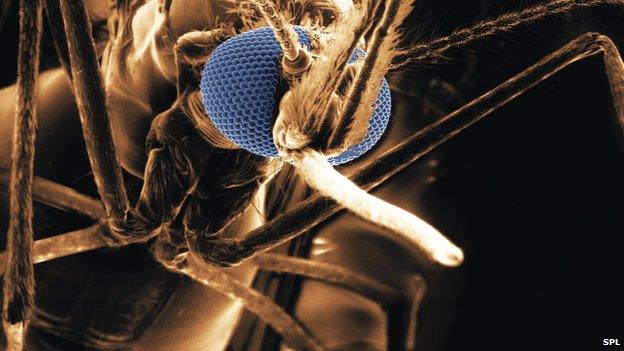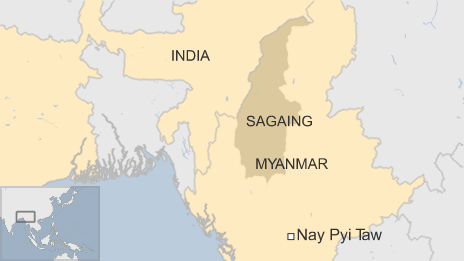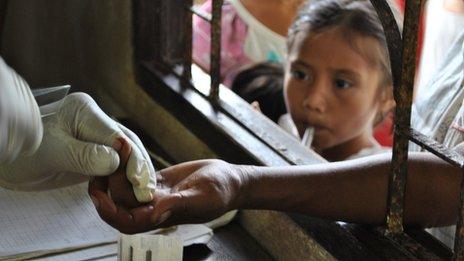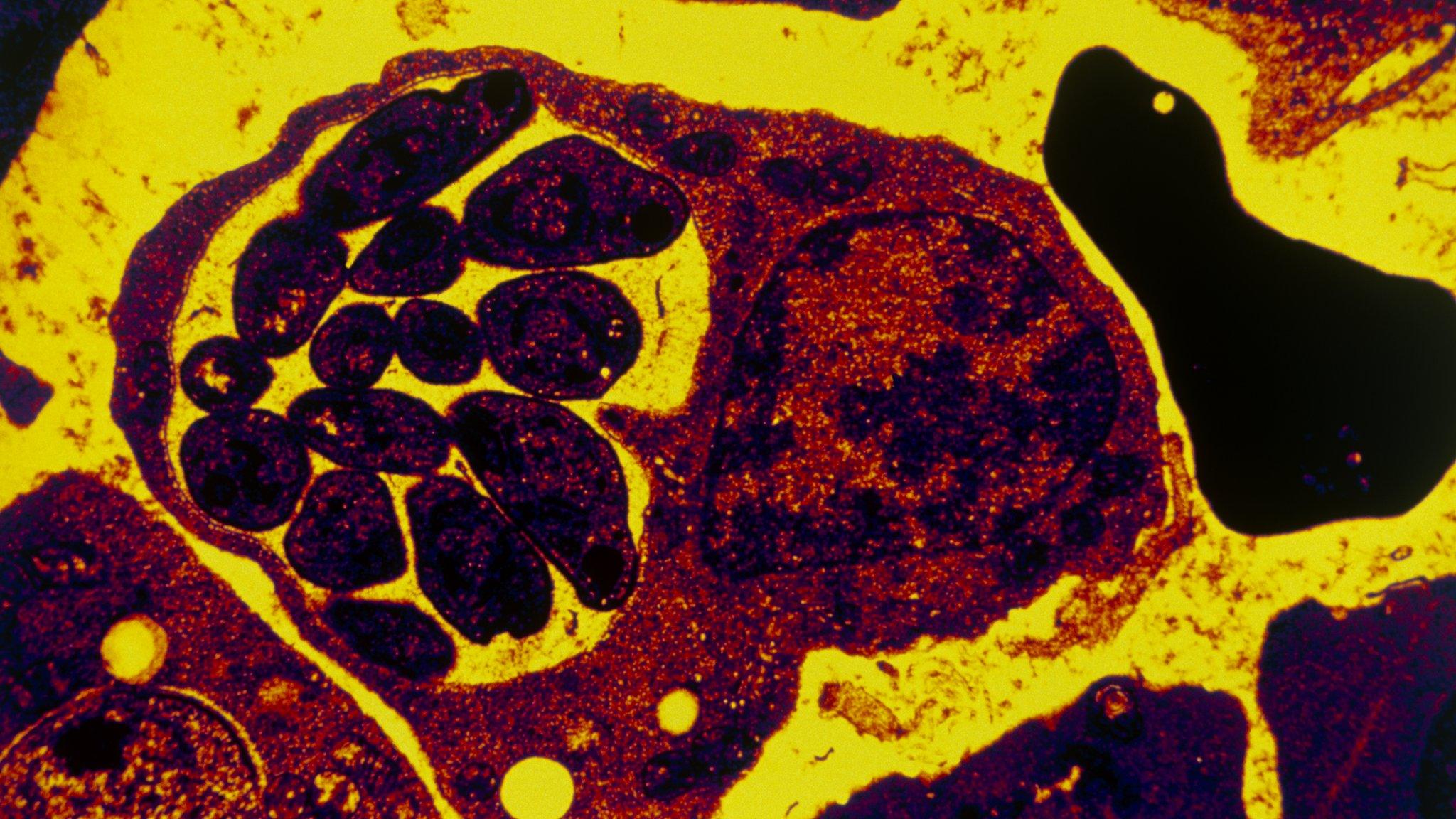Malaria on Myanmar-India border is 'huge threat'
- Published

Malaria is spread by mosquitoes
Resistance to the drug that has saved millions of lives from malaria has been detected over a wider area than previously thought, scientists warn.
The ability of the malaria parasite to shrug off the effects of artemisinin has been spreading since it emerged in South East Asia.
Tests, published in Lancet Infectious Diseases, external, now show this resistance on the verge of entering India.
Experts said the development was "alarming" and an "enormous threat".
Deaths from malaria have nearly halved since 2000, and the infection now kills about 584,000 people each year.
But resistance to artemisinin threatens to undo all that hard work, and it has been detected in:
Cambodia
Laos
Thailand
Vietnam
Myanmar, also known as Burma
Blood samples from 940 people with malaria from 55 sites across Myanmar showed this resistance was widespread across the country.
One site, in the Sagaing region, showed that resistant parasites were just 25km (15 miles) from the Indian border.
'Clear threat'
One of the researchers, Dr Charles Woodrow, from the Mahidol-Oxford Tropical Medicine Research Unit, in Thailand, told the BBC News website: "We can see artemisinin resistance is clearly present quite close to the Indian border, that's clearly a threat and in the future is likely to lead to extension of the problem to neighbouring areas."

Artemisinin is normally given as part of combination therapy.
Initially the other drug will pick up the slack to keep the combination effective, but Dr Woodrow says this resistance will "inevitably" lead to it failing.
"If this were to spread into India, malaria will continue to affect rural populations there, but there may not be an immediate effect on cure-rate," he said.
"But beyond the short term, there is very likely to be a problem, and there are very few [other] drugs on the table."

Malaria parasites inside a red blood cell
History lesson
This has all happened before.
Chloroquine probably saved hundreds of millions of lives, but resistance was discovered in 1957 around the border between Cambodia and Thailand.
Resistance spread, external around the world and reached Africa 17 years later.
There is no evidence of artemisinin resistance in Africa yet, although there is concern that history is about to repeat itself with deadly consequences.
Dr Woodrow told the BBC: "The evidence from the global spread of chloroquine resistance is this translates to a large increase in the number of cases and a higher number of deaths."

Why South East Asia?
South East Asia has been implicated in the rise of resistance to both chloroquine and artemisinin.
The main explanation is that lower levels of natural malaria immunity exist in the region than in Africa.
With no background resistance, the drugs have to do all the work in infected patients in South East Asia.
But there are far more cases of malaria in Africa, and repeat infection is common so people there develop some immunity.
It means the natural immune system and the drug share the load of fighting off malaria.
This makes South East Asia a riper region for the parasite to develop resistance.

Prof Philippe Guerin, the director of the Worldwide Antimalarial Resistance Network, said: "This study highlights that the pace at which artemisinin resistance is spreading or emerging is alarming.
"We need a more vigorous international effort to address this issue in border regions."
Prof Mike Turner, the head of infection and immunobiology at the Wellcome Trust medical charity, said: "The new research shows that history is repeating itself, with parasites resistant to artemisinin drugs, the mainstay of modern malaria treatment, now widespread in Myanmar.
"We are facing the imminent threat of resistance spreading into India, with thousands of lives at risk."
- Published23 November 2012

- Published19 January 2015

- Published30 July 2014
.jpg)